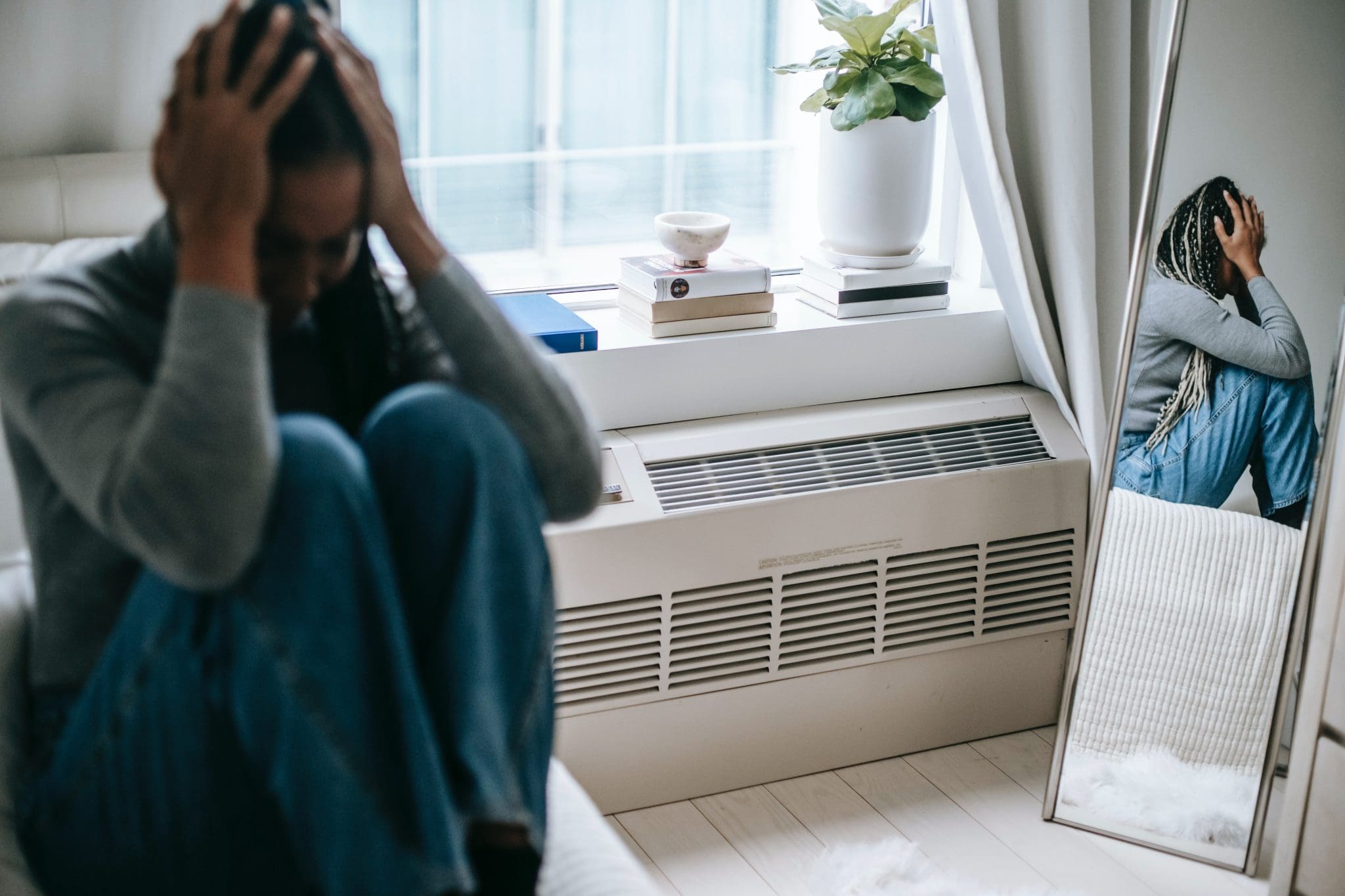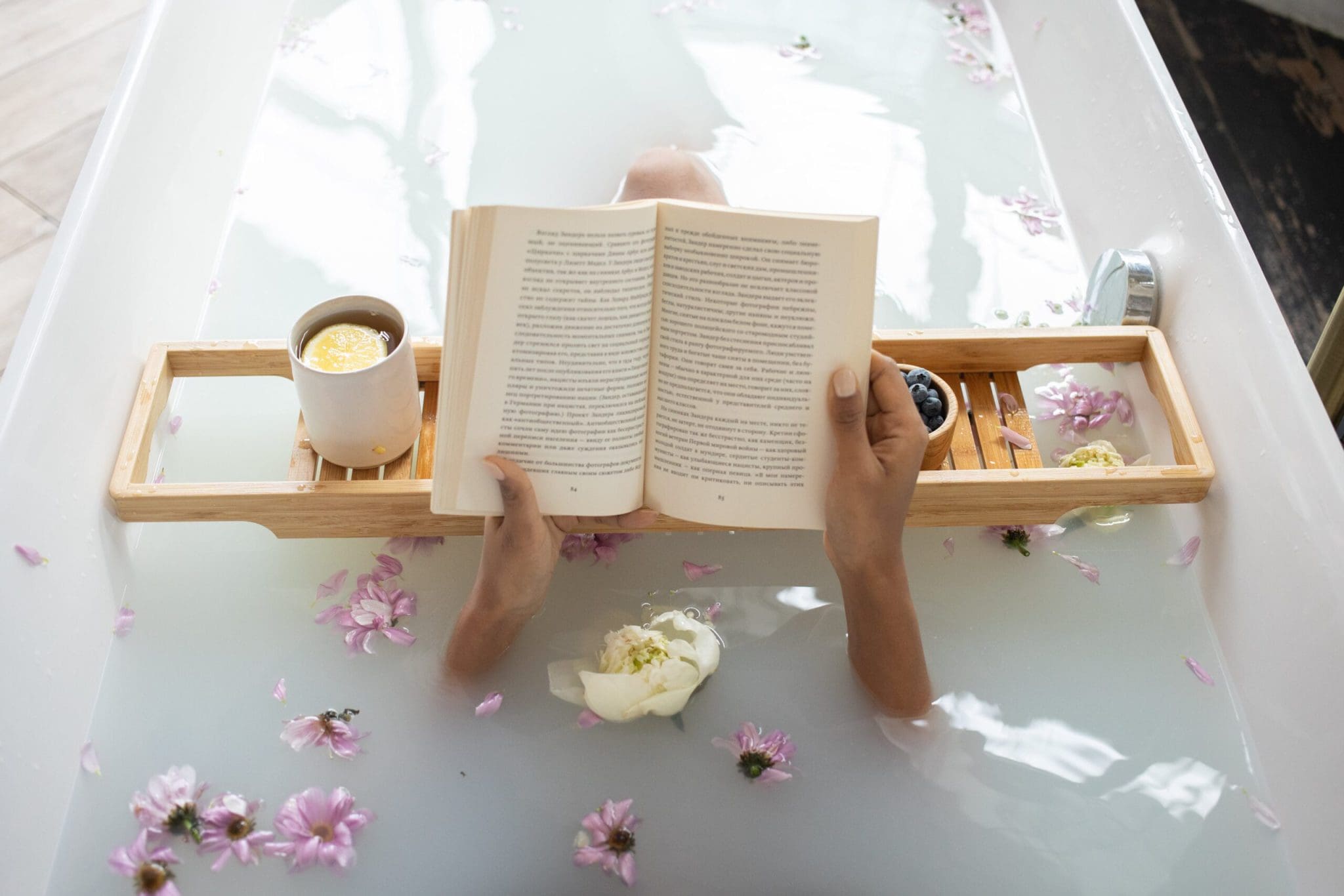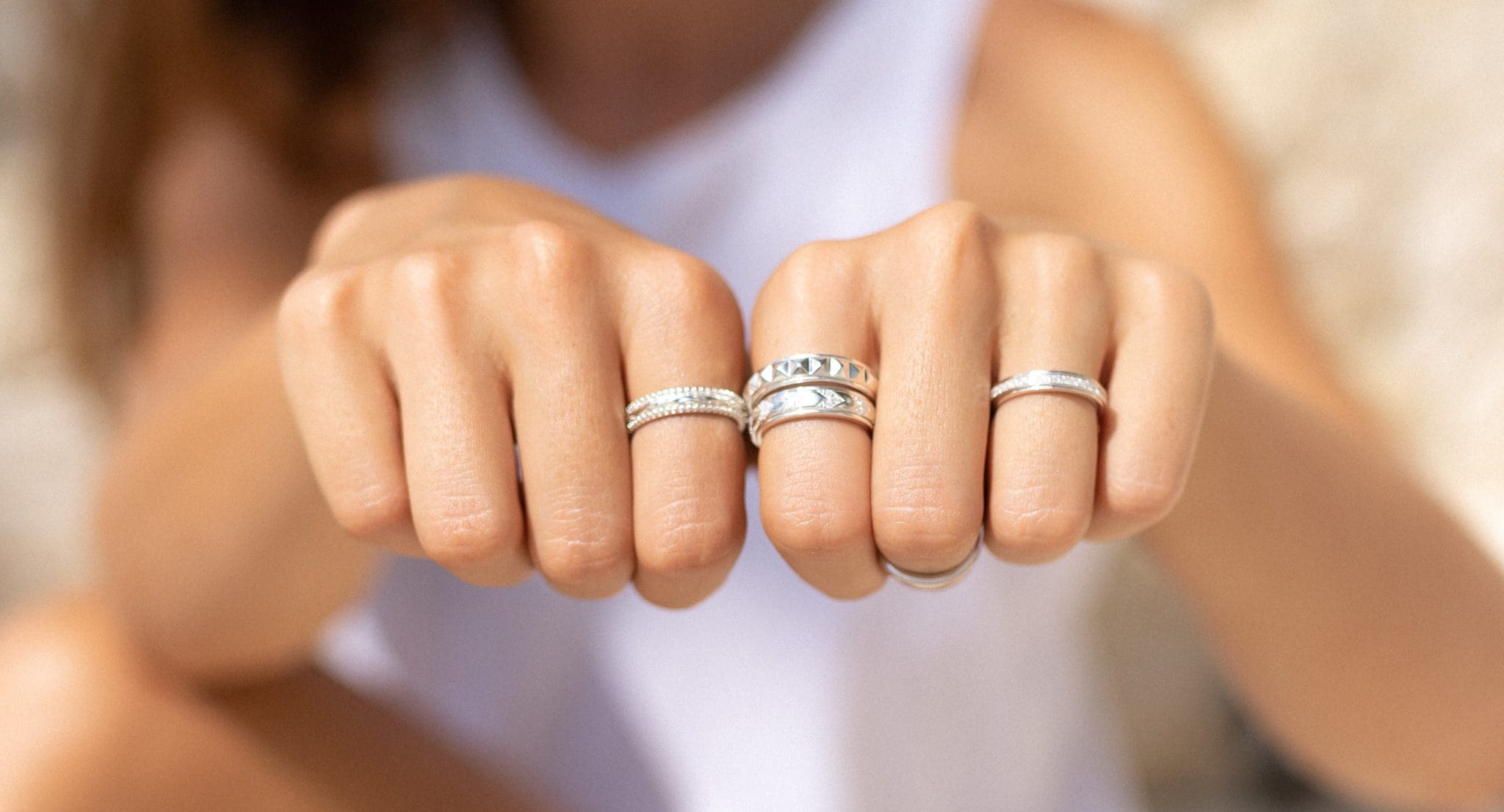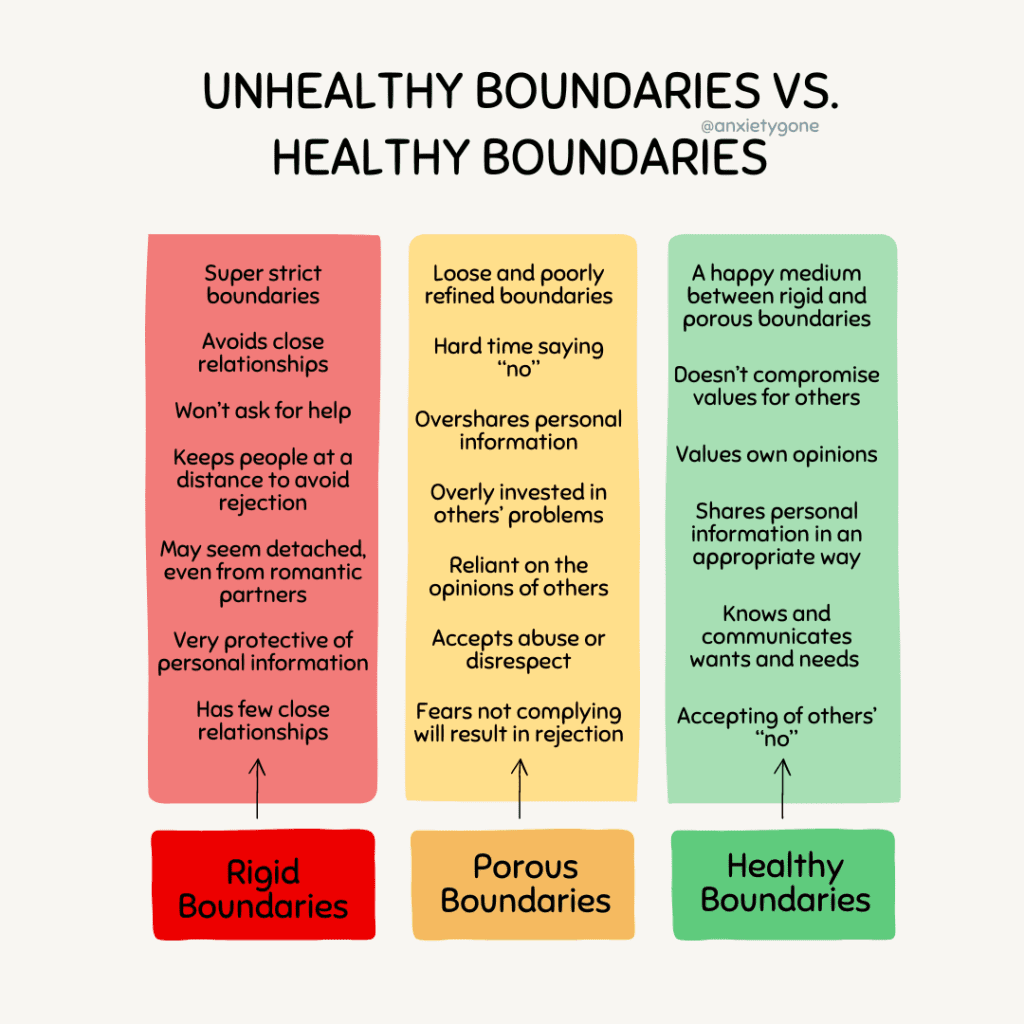Full Disclosure: Clicking on these links could mean a tiny commission for me, at no extra cost to you.
We’re big fans of setting boundaries here! Personal boundaries are essential for creating and maintaining healthy relationships, protecting your peace and energy, and prioritizing your time and wellness. We’ve covered various aspects of boundaries previously, from workplace boundaries to the essential tips for communicating your limits kindly yet firmly. But there’s still more to discuss! Today, we’re giving you the inside scoop on establishing boundaries – and it all starts with identifying what personal boundaries need to be set.
What Are The Seven Main Personal Boundaries?
While there are all kinds of categories of boundaries you can set to protect your peace and mental health, there are seven types that most people tend to focus on as they set out on their boundary-setting journey.
- Emotional Boundaries: These help manage how and with whom you share your feelings.
- Physical Boundaries: These involve your personal space, touch, and privacy.
- Material Boundaries: These relate to your possessions, finances, and how you manage sharing with others.
- Time Boundaries: These focus on how you allocate your time between work, leisure, and relationships.
- Intellectual Boundaries: These deal with respecting and sharing thoughts and ideas.
- Sexual Boundaries: These pertain to consent, communication, and comfort levels within intimate relationships.
- Non-negotiable Boundaries: These are not open for discussion or compromise because they are critical to your personal values, comfort, and mental or physical health.
Understanding and implementing these boundaries can lead to a more respectful, fulfilling life.
Identifying What Boundaries You Need to Set
The first step to setting healthy boundaries is identifying which ones you need or want. The best way to do this is to ask yourself a few questions related to your values, needs and limits. We’ve made the process easy for you, with example questions laid out for these types of boundaries. So, it’s time to set boundaries and protect your peace. Let’s go!
1. Emotional Boundaries
Emotional boundaries help define how and with whom you share your feelings and personal experiences. They are crucial for maintaining emotional health and building respectful, supportive relationships. To better understand your emotional boundaries, you might consider reflecting on these questions:
- Who do you feel safe discussing personal matters with, and who might not be appropriate for such discussions?
- How can you create time and space to process your own emotions, ensuring that when you share with others, it’s a constructive exchange rather than an emotional overload?
- How will you and your trusted confidants check in with each other to ensure everyone is comfortable with the level of emotional exchange?
- Are there specific topics or issues you prefer not to discuss with friends or family?
Thinking about these aspects can help you navigate your emotional landscape more effectively, allowing for healthier and more meaningful connections.
Examples of Emotional Boundaries:
Setting emotional boundaries is crucial for maintaining your emotional health and building respectful relationships. Here are some examples of how you might express these boundaries:
- “I value our friendship, but I need to be alone right now to recharge.”
- “I’m not in the right headspace to discuss this issue at the moment. Can we talk about it later?”
- “I appreciate your advice, but I need to make this decision on my own.”
- “I find discussions about [sensitive topic] really draining, so I’d prefer we talk about something else.”
- “I’m not comfortable discussing my personal life to that extent.”
- “When I share my feelings, I’m looking for support, not solutions.”
2. Physical Boundaries
Physical boundaries involve setting limits on how you engage physically with the world and with others. They encompass everything from personal space and touch to your diet and activity levels. When exploring your physical boundaries, consider reflecting on a few important questions:
- How do you prefer to be touched by others? This could mean preferring hugs, handshakes, high-fives, or perhaps no touch at all.
- Who are you comfortable allowing into your personal space? This might include friends, partners, family members, or colleagues.
- Do you consider your bedroom a private sanctuary, or are you okay with others entering this space?
- Whose opinions on your diet do you value? Are there certain foods or drinks you consistently avoid, such as alcoholic beverages?
- How do you ensure you get the rest you need? Is setting aside time for relaxation a priority for you?
By contemplating these questions, you can better understand and communicate your physical boundaries, leading to healthier interactions and a greater sense of well-being.
Examples of Physical Boundaries:
Healthy physical boundaries are all about listening to your body and communicating your needs clearly to others. Here’s what setting healthy boundaries might look like in everyday life:
- “I’m really tired right now. I need to sit down and take a break.”
- “I’m not much of a hugger. I prefer handshakes.”
- “I need to eat something now. I’m going to grab a bite.”
- “No, I’m not comfortable with that kind of touch.”
- “Please ask me before you go into my room.”
3. Material Boundaries
Material boundaries relate to your belongings, finances, and personal spaces like your home. These boundaries help you manage and protect your physical resources. To establish clear material boundaries, you might consider reflecting on the following questions:
- What resources are you financially comfortable sharing with others?
- Beyond affordability, what are you personally willing to lend or give away?
- How do you prefer to manage the sharing of your belongings? For example, do you lend items with specific conditions or time frames?
- Who are the people with whom you feel comfortable sharing your possessions? Are these family members, close friends, or neighbors?
- Are there items or resources that you consider off-limits for sharing?
Thinking about these aspects can help you define your material boundaries, ensuring you feel secure and respected in terms of your possessions and personal space.
Examples of Material Boundaries:
Material boundaries help manage and protect your belongings, finances, and personal space. Here are some ways you might set and express these boundaries:
- “I’m happy to lend books, but I need them returned within a month.”
- “I don’t share my personal devices like my laptop or phone with others.”
- “I prefer not to split bills on outings; I’ll pay for what I ordered.”
- “Our home is a private space, so we ask guests to call before visiting.”
- “I’m not comfortable lending money.”
- “I keep my workspace personal, so I’d appreciate it if you didn’t use my desk supplies without asking.”
4. Time Boundaries
Time boundaries are all about how you manage and value your time. They play a crucial role in helping you maintain a balanced life and fulfill both personal and professional obligations effectively. To set clear time boundaries, you might want to consider the following questions:
- How much time do you want to set aside solely for yourself each day or week?
- When planning how to use your free time, what activities or responsibilities take precedence?
- If you’re approached for professional collaborations or projects, what is your rate per hour? How do you determine which projects are worth your time and effort?
Reflecting on these questions can help you establish time boundaries that protect your schedule and prioritize your well-being, enabling you to be more present and productive in every aspect of your life.
Examples of Time Boundaries:
Time boundaries are essential for balancing your personal and professional life effectively. Here are examples of how you might establish and communicate these boundaries:
- “I block out my evenings for family time, so I’m not available for work calls after 6 PM.”
- “I need Sundays to myself for personal care and relaxation, so I prefer not to make plans on that day.”
- “I allocate 30 minutes for morning exercise, and I don’t take appointments during that time.”
- “I appreciate advance notice for meetings to organize my schedule better; last-minute requests are really challenging for me.”
- “I’m currently focusing on a big project and won’t be taking on any additional responsibilities until it’s complete.”
- “I like to take a short break after every hour of work to stay productive, so I won’t be immediately available during those times.”
5. Intellectual Boundaries
Intellectual boundaries pertain to how we manage interactions regarding our thoughts and ideas. Setting healthy boundaries for your categry is crucial for maintaining respect and understanding in conversations, especially when differing opinions arise. To help you define and enforce your intellectual boundaries, you might consider pondering these questions:
- What does it mean to you when your ideas and perspectives are respected? What behaviors make you feel dismissed or belittled, and how will you take care of yourself if this happens?
- How can you demonstrate respect for the ideas and perspectives of others?
- What are the signs that tell you it’s time to exit a discussion? Are you comfortable with friendly debates, or do heated debates push your limits? How do you decide when a conversation is becoming too contentious?
- How will you communicate your need to step away from a conversation that no longer feels productive or respectful?
- If you feel that your ideas are not being respected, how will you express this to others?
Reflecting on these questions can help you establish clear intellectual boundaries that protect your mental space and foster healthier discussions.
Examples of Intellectual Boundaries:
Intellectual boundaries are important for protecting your ideas, beliefs, and mental energy. Here are some ways you might express these boundaries:
- “I appreciate our discussions, but I need to step away from this topic for now as it’s becoming too intense for me.”
- “I prefer not to engage in debates about [sensitive topic] as I find them too draining.”
- “I enjoy sharing my knowledge, but I ask that my work be credited properly when used.”
- “I value open-minded conversations but will disengage if the dialogue turns disrespectful.”
- “I need some time to process this information before I can offer my opinion.”
- “I choose not to discuss my political views in the workplace to maintain a professional environment.”
6. Sexual Boundaries
Sexual boundaries are essential for maintaining respect and safety in intimate relationships. Recently, sex educators have been emphasizing the importance of these boundaries, which include clear consent, effective communication about preferences, and establishing safety protocols. To help you explore and articulate your sexual boundaries, consider reflecting on the following questions:
- How do you prefer to express consent, both verbally and non-verbally? How should your partner communicate their consent?
- What types of sexual intimacy are you comfortable with? What about your partner?
- During intimate moments, how do you like to communicate? Do you rely more on body language, verbal communication, or a combination of both?
- What are your requirements for sexual safety? Do you feel the need for multiple forms of contraception to feel secure? Is it important for you and your partner to get tested for STIs together?
Understanding and communicating your sexual boundaries clearly can lead to healthier and more fulfilling intimate relationships.
Examples of Sexual Boundaries:
Sexual boundaries are crucial for ensuring comfort, safety, and consent in intimate settings. Here are examples of how you might set healthy boundaries for your sexual life:
- “I’m not comfortable with that type of intimacy. Can we stick to what we both agree on?”
- “I like to communicate openly about what feels good and what doesn’t during intimacy.”
- “I need to have clear, verbal consent before we move forward in our relationship.”
- “I prefer using protection every time, without exception.”
- “I’m not ready to take our relationship to a physical level yet. I need more time.”
- “I don’t want to discuss my past relationships or sexual history.”
7. Non-Negotiable Boundaries
Here are some examples of questions you can ask yourself to help identify your non-negotiable boundaries:
- What actions or behaviors from others immediately make me feel unsafe or uncomfortable?
- How much personal space do I need in relationships, and what happens if this space isn’t respected?
- What are my deal-breakers in friendships, romantic relationships, and work environments?
- Which personal values or beliefs do I consider foundational, and how do I react when they are challenged?
- What level of commitment do I expect in my relationships, and what boundaries do I set if these expectations aren’t met?
- How do I handle requests or demands on my time that conflict with my priorities?
- What kind of communication do I find unacceptable, and how will I respond if someone communicates with me in that way?
Examples of Non-Negotiable Boundaries:
Non-negotiable boundaries are those that you absolutely will not compromise on because they are essential to your well-being and values. Here are examples of how you might express these boundaries:
- “I will not tolerate any form of emotional or physical abuse in my relationships.”
- “My Sundays are reserved strictly for family; I do not work or take calls on this day.”
- “I require honesty in all my relationships, and any breach of trust is a deal-breaker for me.”
- “I do not lend money to friends or family as a personal policy.”
- “I need to be treated with respect at all times, and disrespectful behavior will lead me to end the interaction.”
- “I do not discuss my personal finances with anyone outside of my immediate family.”













































